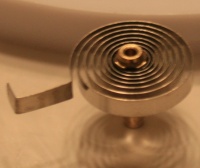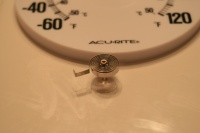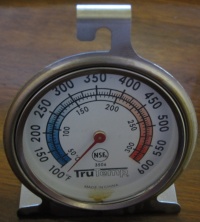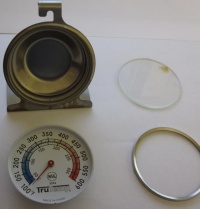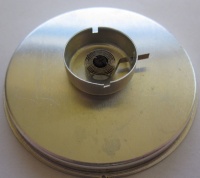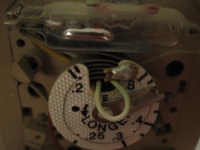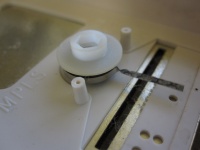Mission Possible/Bimetallic strip
Description
| A bimetallic strip is composed of two different kinds of metals that have been bonded to each other in a strip. Since the metals react to changes in temperature differently, the strip will curl in one direction or the other (or curl and uncurl, if it is formed into a coil). This can be used to make a transfer that reliably reacts to changes in temperature. |
Acquisition
Any digital device is likely to be using a thermistor or thermocouple to detect changes in temperature, not a bimetallic strip, so analog devices are your best bet for finding these.
Thermometers
The common rotary dial analog thermometers use bimetallic strips that are formed into a coil. One end remains fixed while the other end controls the dial's movement. The common outdoor dial thermometers, oven dial thermometers, and hopefully any other rotary dial analog thermometer should have a coil of bimetallic strip in them. Shouldn't cost more than $5.
Outdoor Dial Thermometer Breakdown
Oven Dial Thermometer Breakdown
Thermostats
Analog thermostats may contain bimetallic strips (more than one, potentially). There is also a good change that any given analog thermostat will use a mercury switch (mercury counts as a hazardous substance both in Mission and real life, so either don't even mess with it or be darned careful).
Thermostat Breakdown
Usage
- Heating - increasing the temperature of the strip is easy and fast.
- Nichrome wire
- Matches/Candles
- Peltier device
- Cooling - it is usually easier to cool the strip down to ambient temperature from a higher temperature
- Fans (cooling to ambient)
- Peltier device (active cooling)


